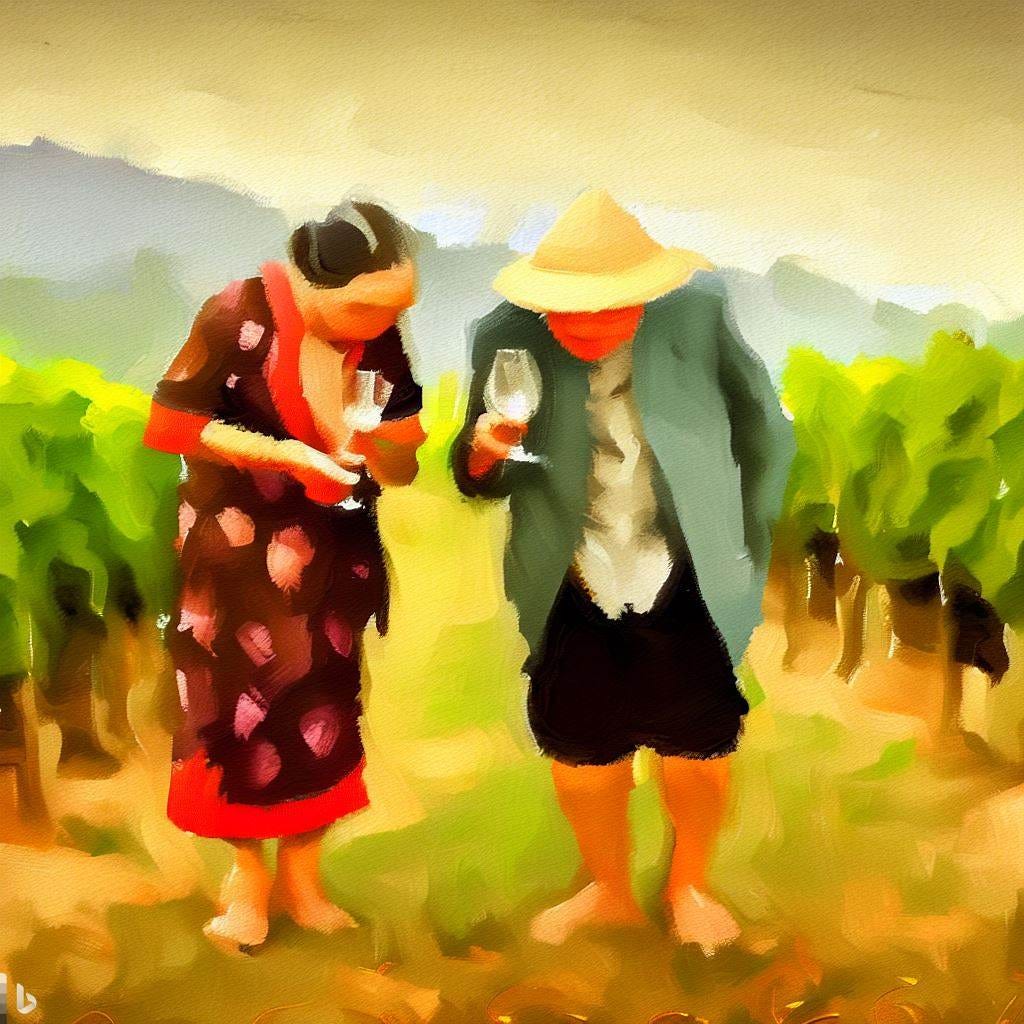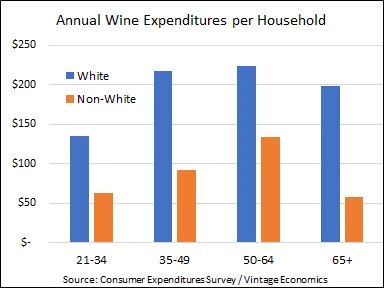The Greying of American Wine is Upon Us
One of the key demographic changes doesn't bode well for wine in America
I try to keep an eye on the impact socio-political forces have on the wine industry and the wine community. Because these forces ebb and flow in various directions and include the effect of global and domestic economic trends, I tend to see wine’s state of play as a slave to forces it largely can’t control. In this respect, the industry is little different from most others.
In my view, there are a few socio-political forces at play today that are currently having the greatest impact on society and economics and are poised to have a continued large impact going forward. They are:
-The emergence and integration into the culture of Artificial Intelligence
-The ongoing and unbridgeable political polarization
-The media silos Americans shove themselves into
But another key trend that is impacting society and culture and is and will continue to impact the wine industry is the aging of America.
America’s population is aging in a significant way. Today the percent of the U.S. population aged 65+ is about 18%. By 2040 it is projected that roughly 22% of Americans will be 65 years of age or older. This is in contrast to 1950 when seniors represented about 8% of the population. It was 4% in 1900. The reasons for the aging of America are many: significantly lower birth rates, longer life spans due to better healthcare, slower growth of immigration, and, of course, the Baby Boomer generation now hitting peak seniority.
This does not bode well for wine.
According to Chris Bitters at Vineconimics:
“Based on the current distribution of spending across five-year age segments, wine expenditures appear to rise rapidly during the late twenties through the forties, then peak in the fifties and early sixties, and begin to decline at a modest pace in the late 60s.”
The “decline” occurs among the age cohort that we see increasing relatively rapidly right now.
But there is another factor to consider: Race/ethnicity. White folks are greatly overrepresented in wine purchases. The fastest-growing demographic in America is Hispanic, which is greatly underrepresented in wine consumption. As the percentage of Hispanics in the growing 65+ segment increases (which begins to drink less), the decline in wine sales among those 65 years of age and older will accelerate.
The point here is that one of the primary demographic changes occurring in the United States—an aging population—is set to have a significantly negative impact on wine sales. Going forward, a smaller percentage of the U.S. population will be in its prime wine-drinking window. This fact is of little concern to policymakers has they have bigger fish to fry. For example, there is a smaller and smaller number of workers available to pay for the Social Security expenses of a growing number of eligible Americans.
However, the wine industry should certainly be concerned with the impact a greying America will have on wine sales.
There really is only one thing the wine industry can do to avoid the impact of fewer people in their wine-drinking prime: increase per capita wine consumption. This has been the topic of conversation for some time now. But it’s not the topic for this issue of Fermentation.
However, I can say this…if per capita consumption of wine does not increase over the next 20 years, during that time we will see a noticeable contraction in wine sales and wine production. Is this a bad thing? Not necessarily. It is merely a thing. It does not mean there will be less good wine to drink. It does not mean we will see less innovation in the wine industry. So for those who do still choose to drink wine, there will be more than enough to go around. I would, however, suggest that for those in the early to mid-20s who plan to make a career in wine, this situation be taken into consideration.





